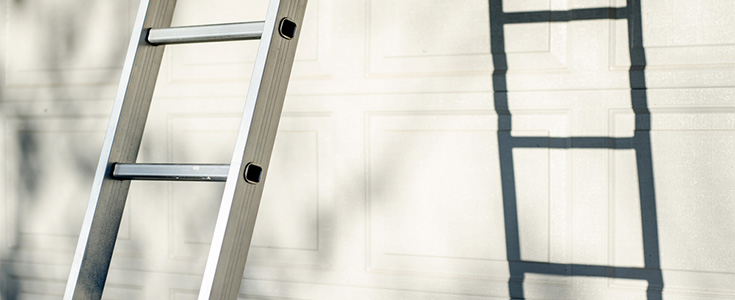How Have Ladders Become Safer?
20/12/2017
In many ways, the modern ladder still seems like quite a simple invention – at least in principle, anyway! It’s easy to forget that even the most basic of ladders is the product of centuries of innovation and progressive attitudes to safety standards. This week on the blog here at Browns, we thought it was worth taking a look at how far they’ve come – and why they’re so much safer than they used to be!
Safety Didn’t Always Come First

The ladder is one of the world’s most ancient inventions, estimated to be around 10,000 years old at least. But even as recently as 200 years ago, many were still being constructed as homemade projects. There were of course professional carpenters, but for those users who wanted to make a saving (and let’s be honest, who doesn’t?), they’d simply build them at home. That meant no overarching safety standards, no ladder inspections, and minimal testing – all of which are very much legally required today!
It was partially for this reason that the only type of ladders on the market were rigid wooden variants – at least until one John H Basely invented the first stepladder in 1862 (a far cry from the sturdy Chase Heavy Duty Builder’s step in our inventory today!). The stepladder was a major revolution in ladder construction, and only a relatively short time later it was followed by another, as a Norwegian Fire Department contracted the Aluminium Company of America to create the first aluminium ladder. Since it didn’t share any of the same weaknesses to weather or dampness as wood, it quickly became another vital ladder-making material.
A Series Of Safety Innovations

From there, the next wave of innovation came thick and fast, as aluminium allowed for the creation of a new generation of safety features. For example, it enabled the addition of ridged rungs for a non-slip surface, making the average ladder vastly more safe to use in inclement weather. Leg levellers were invented in 1936 to help further stabilise ladders on unpredictable surfaces. Paint-rests and clip-on steps allowed tradesmen and homeowners to rest their tools on while performing jobs, allowing them to maintain the crucial Three Points of Contact that is today a central tenet of ladder safety.
With organisations like the Health and Safety Executive and the Ladder Association around today to regulate the manufacture and use of ladders, modern users have a far better idea of the most important dos and don’ts with regard to ladders, helping to keep everyone safe!
As you might expect, the idea of safety is central to everything we do here at Browns Ladders. Everything we stock has been held to rigorous safety standards – for example, our Werner 3.2 Telescopic Ladder has been certified to EN131-6, the accepted standard for telescopic ladders. Plus, our very own in-house experts carry out regular ladder inspections to help ensure that your access equipment is in excellent condition, and suitable for whatever job you have planned for it.
Feel free to browse the rest of our extensive ladder inventory, or give us a call on 01282 615517 for any questions or queries you might have.